Do you dive right into a STEM challenge or activity without brain warm-ups? If you have the time to warm-up, your students could benefit with increased brainstorming abilities, collaboration, and focus! You don’t need to spend a lot of time warming up, so just pick one of these to try before your next STEM challenge!
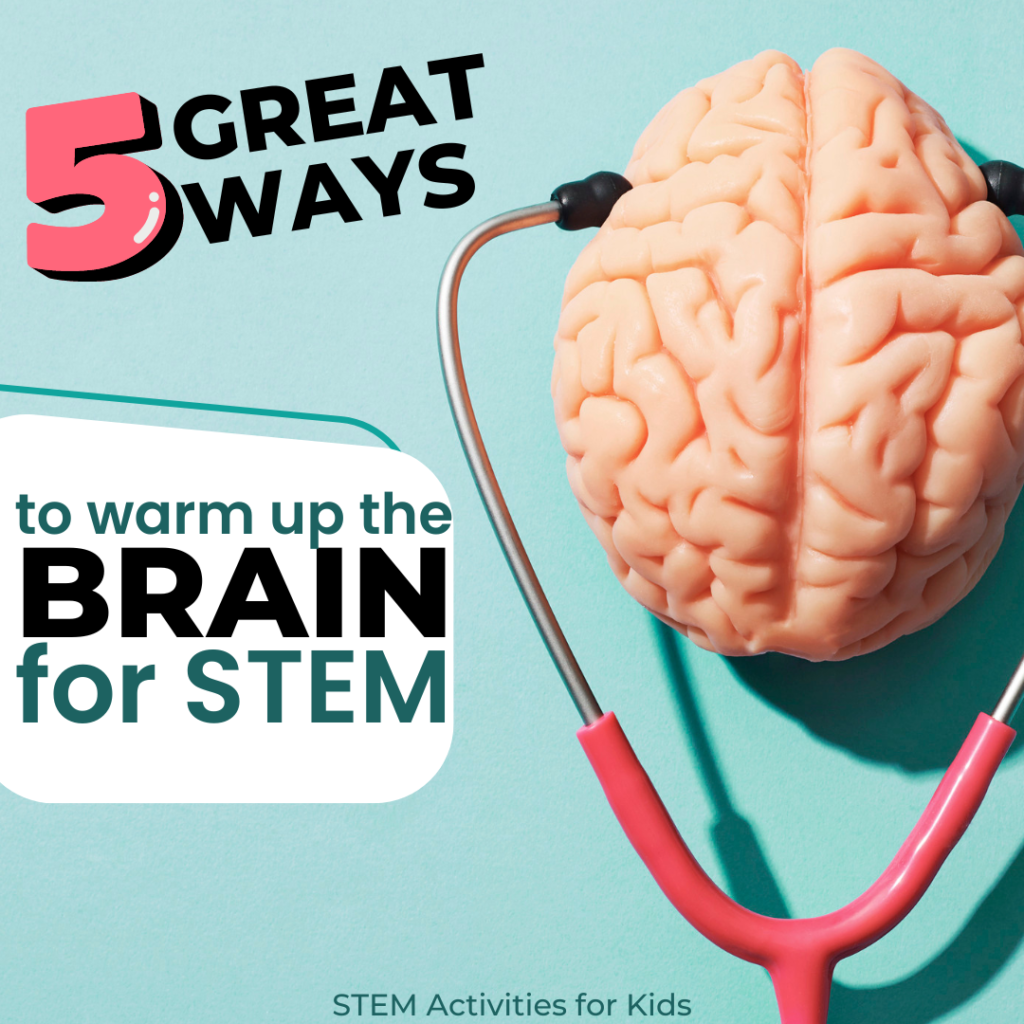
1. Brain Teasers, Riddles, or Critical Thinking Warm-Ups
Try a brain teaser, a STEM riddle, or critical thinking warm-ups! Why? These warm-up activities encourage out-of-the-box thinking and creative problem solving!
Here’s an example of a brain teaser:
You have a 3-gallon jug, a 5-gallon jug, and a supply of water. Using only these two jugs, how can you measure exactly 1 gallon of water?
This will take a bit of thinking to get to the solution (see the bottom of this section for an answer!). Students can discuss ideas of how to use two different jugs to measure out water, or you can actually supply them with similar cup measures to figure out by trial and error!
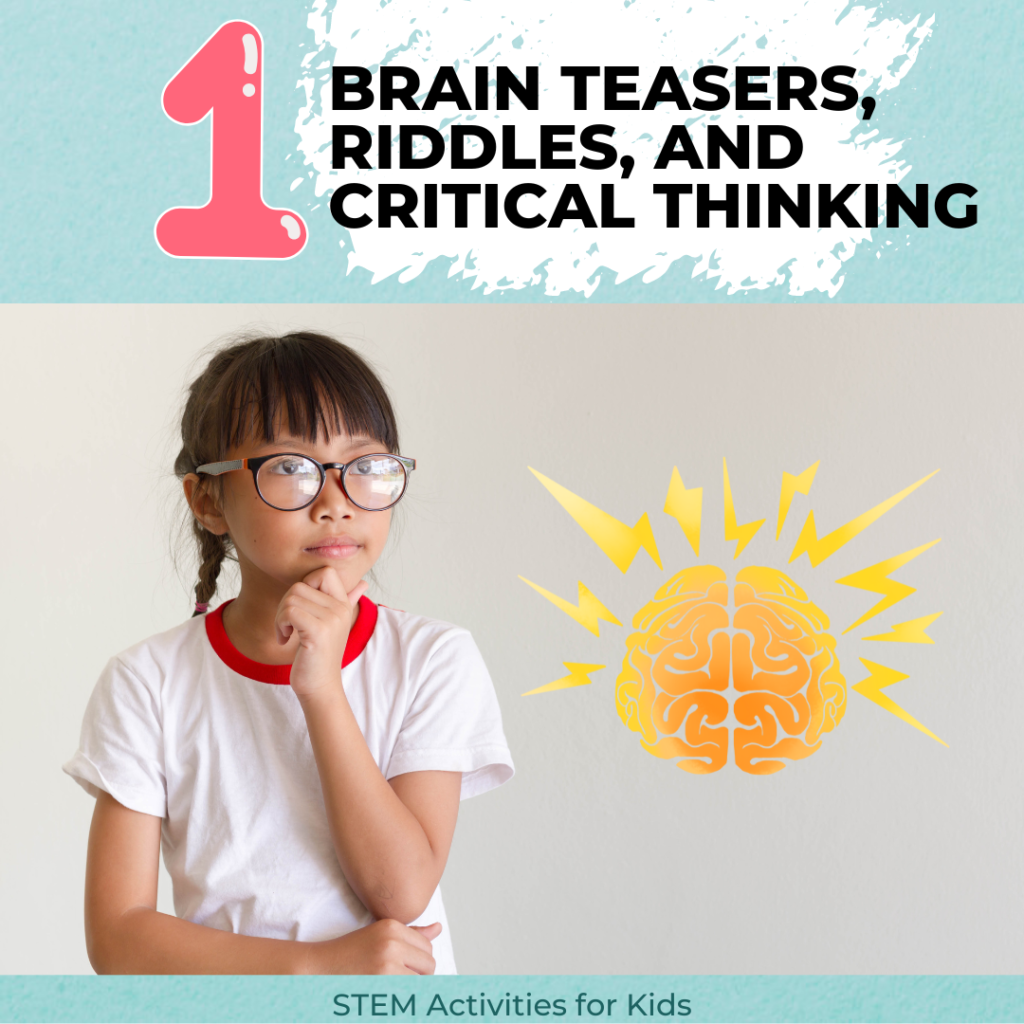
Try some fun science riddles or math riddles (be prepared for groans on some of these).
I put together a set of STEM critical thinking warm-ups in this post, where you can download them and try them out!
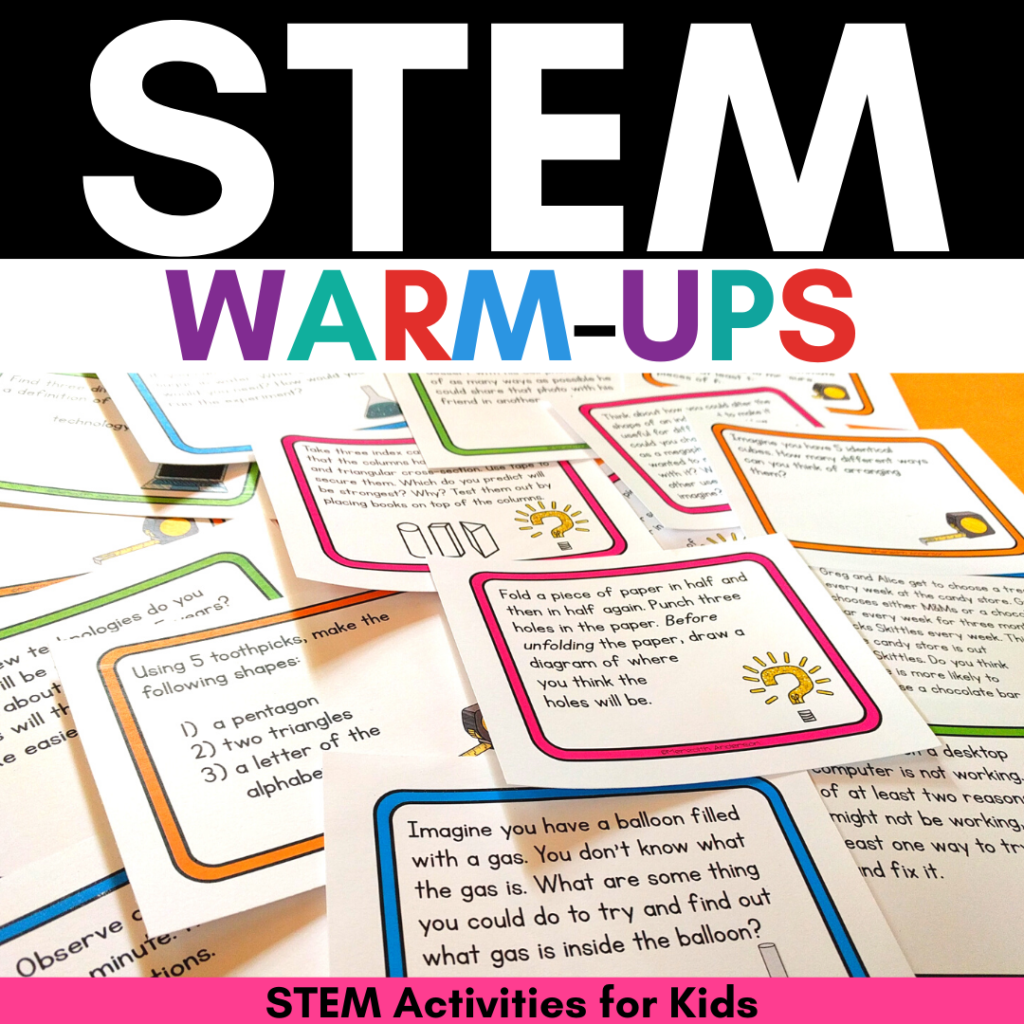
Possible answer to brain teaser:
- Fill up the 5-gallon jug completely with water.
- Pour water from the 5-gallon jug into the 3-gallon jug until it’s full; this leaves 2 gallons of water in the 5-gallon jug. (2 gallons in 5-gallon jug, 3 gallons in 3-gallon jug)
- Pour out all the water from the 3-gallon jug. (2 gallons in 5-gallon jug, 0 gallons in 3-gallon jug)
- Pour the 2 gallons of water from the 5-gallon jug into the 3-gallon jug. (0 gallons in 5-gallon jug, 2 gallons in 3-gallon jug)
- Fill up the 5-gallon jug completely with water again. (5 gallons in 5-gallon jug, 2 gallons in 3-gallon jug)
- Pour water from the 5-gallon jug into the 3-gallon jug until it’s full. (4 gallons in 5-gallon jug, 3 gallons in 3-gallon jug)
- Empty the 3-gallon jug again. (4 gallons in 5-gallon jug, 0 gallons in 3-gallon jug)
- Fill the 3-gallon jug with 3 gallons from the 5-gallon jug.
- You have 1 gallon of water left in the 5-gallon jug.
2. Discuss a STEM Topic or Issue
I like to use discussion topics that have strong arguments for both sides: Is it more important to spend money on space exploration or improving conditions on Earth? Should the QWERTY keyboard remain the standard or should we adopt a different layout?
Why is this a good warm-up activity? Collaboration in STEM is KEY to success. When you warm-up with a topic that has two or more correct possible answers, it helps students see that there are multiple ways to solve a problem, and to acknowledge and appreciate others’ ideas.
Which topics in STEM affect your students? Grab inspiration from current news or trends in tech, gaming, science, and education!

You can also find a list of editable prompts in the resource below. Not that I created these for upper-grades students but almost all of them can be used with younger students too!

3. Get Moving!
When I coached a robotics team, I always made sure we got MOVING! Try going for a quick walk if you can, a 3 minute dance party, or try to work in a crossing the mid-line session.
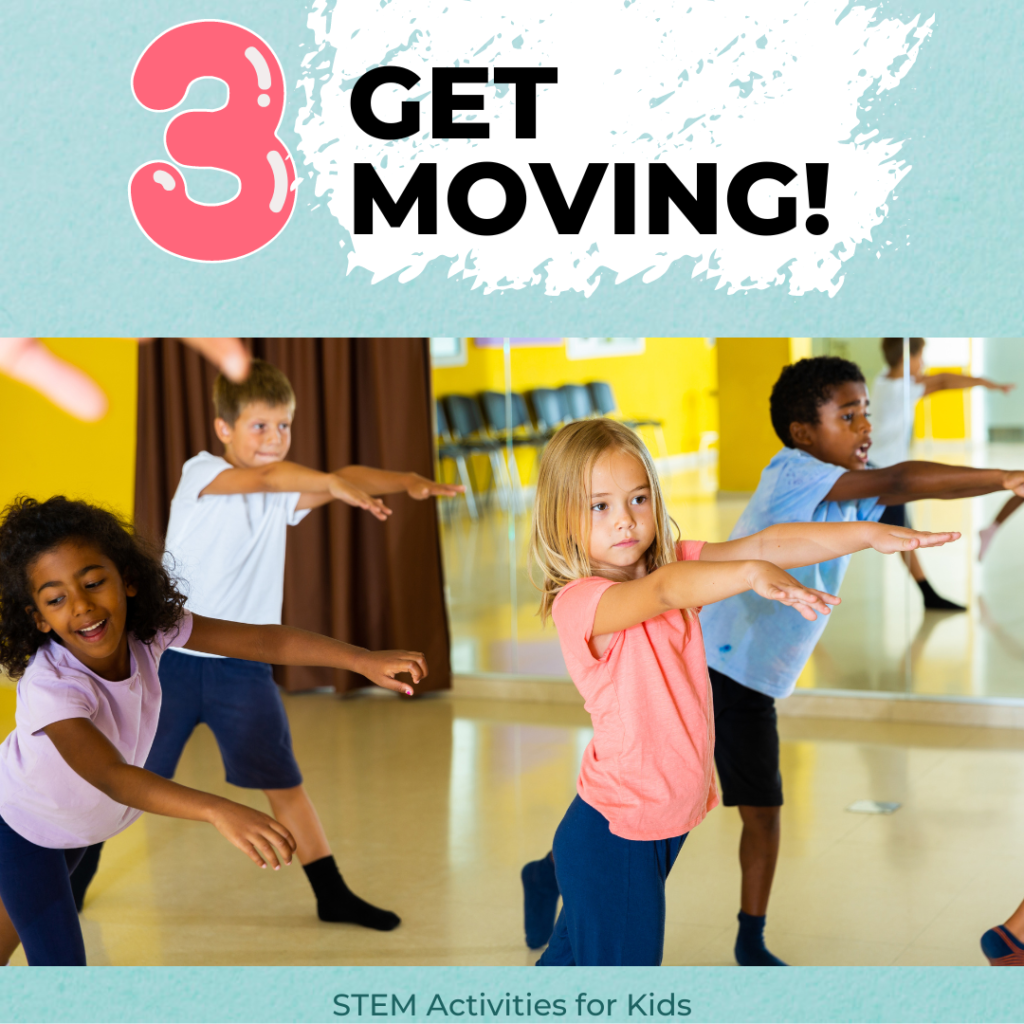
Here are some ideas to try:
Crossing the Midline from Dan the OT Man
Cross Lateral Brain Exercises from Von Muller
Crossing Midline Workouts from Pediatric Therapy Essentials
You can keep it simple and try a good old fashioned game of Simon Says!
Why is this an important warm-up activity? Moving the body gets the mind going, too! Read more about brain benefits of exercise at American Psychological Association and Smithsonian Magazine. Crossing the midline is something that happens naturally as a child develops. I didn’t find any specific research articles about the benefits of this type of activity, but if you try some of those linked above, I think you’ll agree they are indeed both brain busting and fun!
4. Try Mindfulness Activities
While mindful breathing is a part of my daily life at this point, I find it’s easiest to practice mindfulness with kids through either simple yoga (yes, you can do chair yoga!) or 5-finger breathing.

You can grab a free set of yoga brain breaks in my TpT shop:

5. Doodle or Draw
It’s important to warm up the hand-brain connection before starting STEM activities! Not only will doodling prime the hands for building and tinkering, it will help get students ready to get their ideas down in sketches, words, etc.
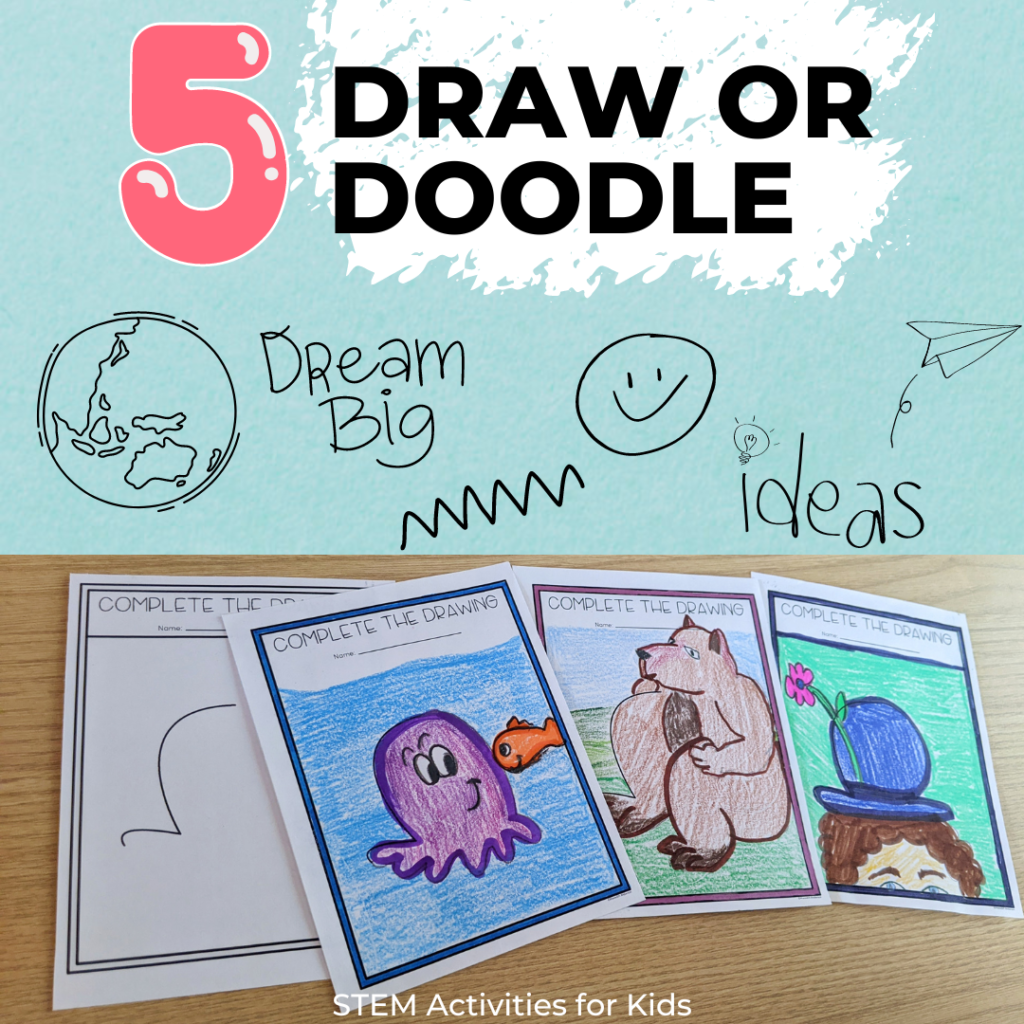
Five fun doodling exercises to try:
- Don’t pick up your pencil! Start at one point on a piece of paper and don’t pick up your pencil until you’ve completed a sketched scene. What can you come up with?
- Turn on some music! Crank up some music and let students doodle while listening. They can even try doodling without looking at their paper!
- Switch hands! Want to really wake up the brain? Try doodling with your non-dominant hand.
- Animal mania! Have students doodle any animals they can think of, real or imaginary. Sometimes slightly directed doodles are easier to get started with.
- Zentangle doodles! Start by having students draw squares or rectangles on their paper, then fill each one with a pattern, like stripes, dots, or zig zags.
Another great way to do this is with “Complete the drawing” exercises. Try them out with this free download:

Increased Creativity & Focus with Decreased Stress
I hope you try out some of these activities and find that they help your students increase their creativity, collaboration, and focus while decreasing any stress or anxiety they may feel during STEM time. Especially for your perfectionist students who are used to being able to find “one right answer,” STEM can present a new and worrisome situation! There might not be a good solution to a problem, or there might be 10 good solutions to a problem. Hopefully these ideas help set the stage that it’s okay to have fun, work hard, and learn from failures in STEM!

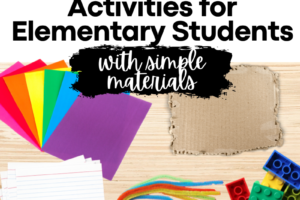
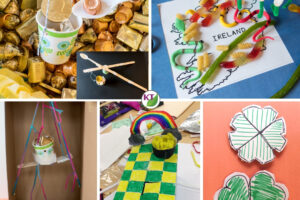
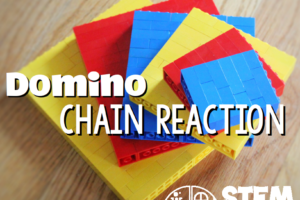
Leave a Reply
Your email is safe with us.